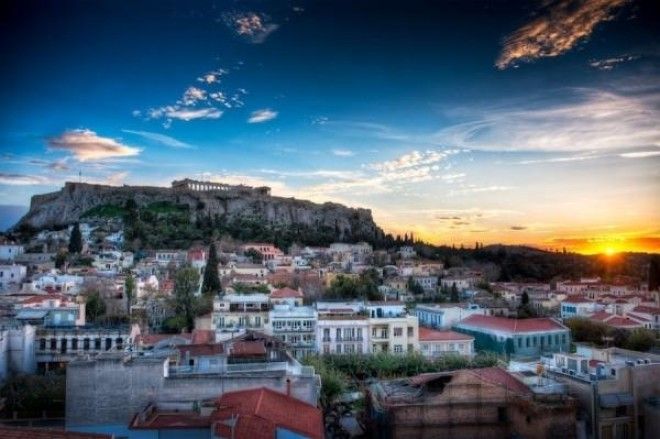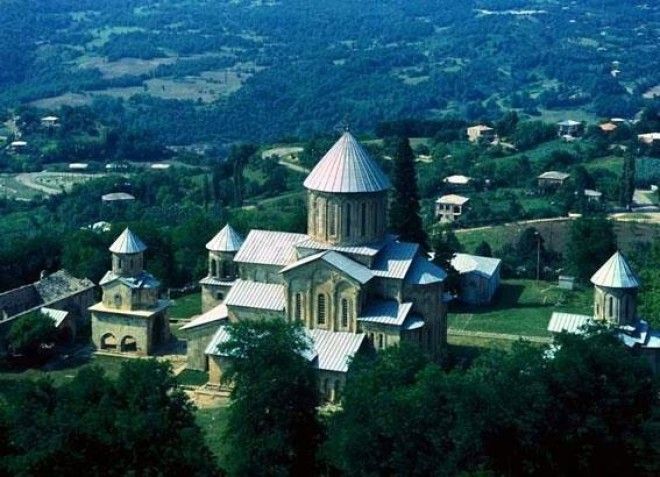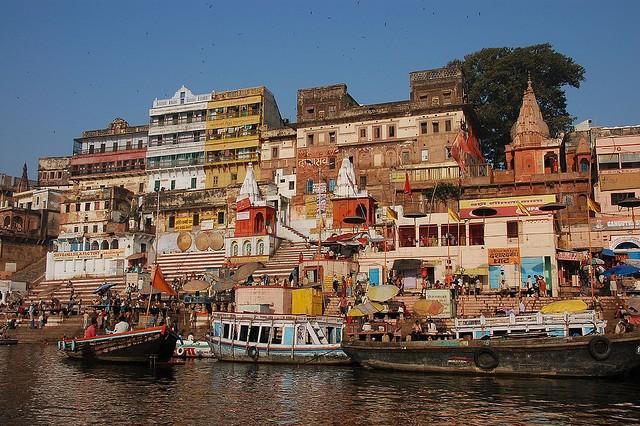1. Finding Salvation in Varanasi, India

Varanasi is not only India's oldest city but one of the oldest continuously inhabited human settlements in the world. Founded ca 1,200 to 1,100 BCE, Varansi is also one of the holiest cities on the planet, where the god Shiva is believed to have lived. Straddling the mighty Ganges River in Uttar Pradesh, which is located ca. 200 miles south-east of Lucknow, Varanasi played an important role in the development of Buddhism and is one of the seven sacred ancient cities in Hinduism. Among the best sites to visit are the Jantar Mantar Observatory perched high above the Ghats on the Ganges and the Palace of Raja Jai Singh of Jaipur. Also a must-see is the Vishwanath Temple, which is dedicated to Shiva. Non-Hindus are not permitted admission, but snapping birds circling its golden spires is always a great photo opportunity. Ramnagar Fort, on the eastern bank of the Ganges, is also worth visiting.
2. Be Philosophical about Athens, Greece

Athens is widely regarded at the cradle of Western civilization and can boast a recorded history spanning at least 3,400 years. Once a powerful classical city-state, where mighty intellectuals like Plato, Socrates and Aristotle held court among their brainy acolytes and the very first Olympic Games were staged, Athens is one of the most influential ancient cities of the world. Home to the Parthenon and the Acropolis, Athens was the first recorded place in history where learning, the arts, philosophy and open debate were universally held in high esteem. Take a stroll through the Plaka neighborhood, where you'll soon lose yourself in a maze of ancient narrow streets, lined by imposing neoclassical mansions and incredibly old monuments. You are walking where democracy was born! Sites worth seeing are the Acropolis Museum, the National Archaeological Museum and Parnitha National Park. When you've had enough of dusty monuments, head to the National Garden of Athens, a green oasis spanning 15.5 hectares that were completed in 1840.
3. Crusading for a Day at Gaziantep, Turkey

Formerly known as Antioch, where thousands of medieval crusaders gathered strength after their battles in Jerusalem, Gaziantep in Turkey is one of the most ancient cities of the world. Human settlements can be traced back to around 3,650 BCE. Gaziantep is located where the Mediterranean region converges with Mesopotamia, which historians regard as the birthplace of the first civilizations. Parts of Gaziantep were founded in 300 BCE by generals under the command of Alexander the Great, who called the place "Zeugma". It eventually fell into the hands of the Roman Empire and became an important trading post along the Silk Road to China. Gaziantep is surrounded by archaeological dig sites. The finds from excavations are displayed in 13 different museums. Visit the Ravanda Citadel, which has impressive remains of Roman baths and cisterns, restored in the 6th century under Byzantine rule. The Zeugma Mosaic Museum is among the must-see attractions. It houses one of the world's largest collections of mosaic, some of them from the 1st century BCE. Also worth visiting is the Emine Gö?ü? Cuisine Museum, entirely dedicated to the wonderful food of the region.
4. On the Trail of the Golden Fleece in Kutaisi, Georgia

If you know your Greek mythology, you’ll know that Jason and his Argonauts went on a quest to find the Golden Fleece. But did you know that the place they ventured to was Kutaisi? The city, a former capital, is north of Turkey in Georgia, at where Europe and Asia meet. As well as being around to be included in Greek myth, Kutaisi also boasts magnificently preserved Renaissance heritage sites from the 10th to 12th centuries. Take a trip up into the mountains for splendid views of the city and the Rioni River and then go back into Kutaisi to visit the sights. Must-sees are the Bagrati Cathedral and the Gelati Monastery where the most celebrated King of Georgia is buried. Also, outside the city are two caves of interest: one with dinosaur footprints, the other offering boat trips on an underground river.
5. Say Hello to King Tut at Luxor, Egypt

Luxor ranks as one of the world's most ancient cities and was first inhabited around 3,200 BCE. Once the capital of the Egyptian empire during its golden age, Luxor is traversed by the Nile River. The ancient monuments are fairly evenly distributed between the West and East Banks of the Nile. You'll find Luxor Temple, Karnak Temple complex, Luxor Museum and the Winter Palace Hotel on the West Bank, while King Tutankhamun's tomb is on the West Bank, in the Valley of the Kings. The Valley of the Queens is also located on the West Bank, together with the Ramesseum, the memorial temple of Ramesses II, and the Colossi of Memnon, a memorial temple of Amenophis III.
6. Write a Prayer in Jerusalem, Israel

Jerusalem is not just one of the most ancient cities in the world, but also one of the holiest, revered by three major religions, Judaism, Christianity and Islam. Jerusalem was once regarded as the center of the known world. Muhammad rose up to the heavens here, the Jews built their very first temples in the hills overlooking Jerusalem and Jesus reputedly took his last breath in the hills above the city. Every year, thousands of pilgrims follow the Via Dolorosa, the road Jesus walked carrying the cross. It begins at the courthouse site where he was sentenced to death and runs on to the Golgotha Hill crucifixion site, where he met his end. The most important pilgrim sites include the Church of Holy Sepulchre, the Temple Mount, Gardens of Gethsemane, Yad Vashem, Mount of Olives and the enormous Western Wall, Judaism's holiest site. The famous Dead Sea Scrolls are housed in the Israel Museum in the Shrine of the Book.
7. Angkor Wat in Cambodia

Far less ancient than the above mentioned ancient cities, Cambodia's Angkor Wat temple complex was built in the 12th century AD and is believed to be the site where the Khmer King Suryavarman II, on whose orders the temple was built, found his final resting place. The temple complex is the best preserved of its kind and boasts huge sand-colored buildings that soar high up into the sky. The core pieces are five towers, which represent the home of the Hindu deities. The temple walls are all covered in elaborate carvings, friezes and sculptures that depict not just religious events held here but also the daily life stuff of the priests and priestesses who once served here. Ankgor Wat was constructed on the remains of a much earlier temple site, which is believed to date back to 980 AD. The temple complex is one of Cambodia's most visited tourist attractions. Invest in a licensed tour guide, which may be a little costly but is well worth the money, as there is just so much to see, which you might otherwise miss.
An experience like no other, wandering streets that were walked by feet millennia ago is thrilling. Have you been to these places or do you recommend other ancient cities to visit?

